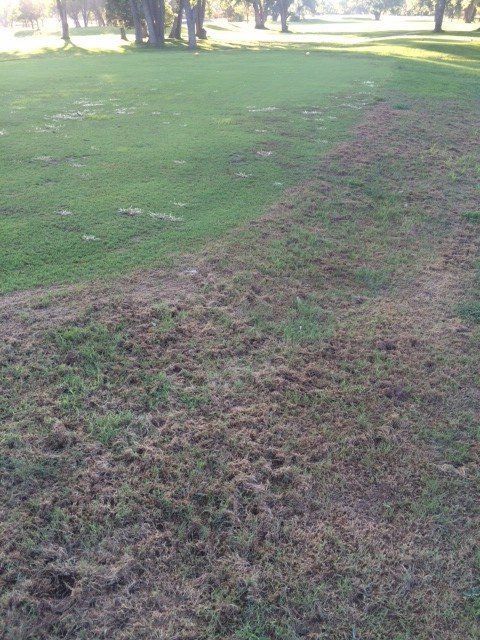Fall Armyworms
Fall armyworms are a tropical pest that migrate to North Carolina in midsummer, wreaking havoc on lawns through the fall season. Moths travel from the south to lay their eggs, which hatch into caterpillars that systematically eat their way through your lawn. While newly laid sod is the meal of choice, they can infect established turf of all types. The damage done by the caterpillars is often permanent, and they may come back several times in a year. The good news is, they won’t survive our winters to fight another year, and there are effective treatments to stop them before they do their damage.
Identifying Fall Armyworms
Fall Armyworms have four main life stages to look out for (as pictured above):
1. Eggs
2. Larvae
3. Pupae
4. Moths
The eggs appear as tiny pearls clustered together in a hairy mass. You will find these clusters adjacent to lawns, in greenery (like shrubs and trees) or on flat surfaces (like signs and buildings). The larvae will hatch within a week or two. They can be identified as caterpillars with two light bands running along the body and a characteristic, downwards Y shape on the head. Once hatched they will quickly go in search of food. As mentioned above, sod is their preference, but no grass is off limits. This is the stage that causes damage, fast. After a few weeks, the caterpillars will burrow into the soil to pupate, eventually emerging as moths. These moths will lay new eggs, and repeat the cycle. Because of their relatively short life span, you may see this process repeated in your area several times in one season. Some years are worse than others, depending on rainfall and temperature.
Identifying the Damage
As their name insinuates, armyworms move together like troops across your lawn. The damage is usually easy to recognize because of the dramatic line caused by their group formation. You will see grass become noticeably and almost completely discolored, as if in a drought. Over a short period of time the damage will continue to fan out from the original site, which was likely adjacent to an egg mass. It’s also important to note here that eggs are rarely brought in with sod. If so, you would see caterpillars throughout your lawn, but that is almost never the case. Instead, you see a group “marching” from one side to the other (or rather “munching”).
If you are noticing damage to your lawn, but the line is not quite as distinct as a straight line, do a soap test. Flush your lawn with water and dish soap to expose the caterpillars. Consistently search for them in your lawn if you’re having concerns. Once identified, begin treatment immediately.
While these menaces can be found in all turf types, you are most likely to find them attacking new sod and fescue lawns.
Treating the Damage
These insects do have natural predators in all of their life stages, like beetles, parasites, and birds (look out for an uptick in bird activity in your lawn - they may be going after the caterpillars). However, those may not be enough to keep them at bay. Insecticide is your best bet when fighting them off. The earlier the better, as the larger caterpillars are more resistant to treatment. And if you have had them once, you will probably have them again. Repetitive treatment is going to be necessary for the duration of the season.
What you can do:
Treat your new sod or existing lawn. Call us for a quote and quick service. The faster we get to work, the less damage you’ll have. And if you don’t want to take a chance, we can treat your lawn with a preventative before the damage happens. If you’re a DIY person, use a 5-10-30 with Acelepryn once or twice a month will help fight off caterpillars.
Be on the lookout. Look for dramatic changes in the color of your lawn, egg masses, caterpillars, bird activity, etc.
Keep treatment on hand. If you are treating yourself, keep a stock of insecticide at home to use immediately if needed. Better yet, keep our number handy for quick access.
Time it right. Apply treatment as soon as possible, but aim for early morning or late afternoon when the caterpillars are more active.
Call in reinforcements. Have a local company provide preventative treatment or be on standby to start insecticide applications.
While cool season grasses may have to be replaced, warm season grasses could recover with fertilization and vigilant watering. If you do have cool season grass that becomes affected, you will have to consider re-sodding or overseeding to begin to repair the damage. And remember, this process happens fast. Battling fall armyworms is never ideal, but knowing they’re out there and how to combat them gives you a big advantage. Avoid the headache by staying on the offense and holding them at bay before they do irreparable damage to your beautiful and well earned lawn.
Email info@tlgturfcare.com for further questions and information.
Additional Resources:
“Fall Armyworms in Turf”, NC State Extension https://www.turffiles.ncsu.edu/insects/fall-armyworm-in-turf/








